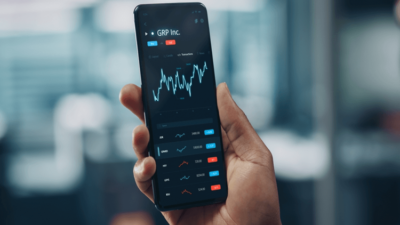Mobile devices have become so accessible, and almost everyone has one. But that also means a massive increase in device theft. Naturally, everyone tries their best to prevent their devices from being lost or stolen. But there’s never a guarantee. According to PreyProject’s Mobile Theft Report, pickpocketing accounted for 10.98%, and home invasions accounted for 7.60% of mobile device theft in 2018.
So it’s better to plan for an eventuality rather than a possibility. But this article isn’t going to cover all the ways to protect against theft. There are plenty of other resources for that. Instead, let’s delve into the means to protect the data on said devices if a device gets stolen. It is arguably even more critical. You can always replace the smartphone or tablet. But personal data in the hands of a stranger is dangerous.
Not only can that be stressful on a personal level, but anyone who uses their device for work can put their company at risk too. In fact, many times over hackers leverage employee devices as entry points for a cyber-attack because they’re easy to get hold of.
Don’t panic, though. There are ways to keep all that data from falling into the wrong hands even if someone steals your smartphone or laptop. Here’s how.
Table of Contents
1. Lock the Device
Sometimes, the simplest tricks are also the most often forgotten ones because people think they won’t help. But a locked device makes it that much harder for a thief to get into it. It’s almost impossible for one that isn’t tech-savvy and hasn’t gotten into a locked phone before.
Both Android and iOS phones offer several ways of locking the screen, including PINs, patterns, and knocks. Many newer models also have biometric authentication like fingerprint and facial recognition. Both of these are pretty secure.
2. Use Encryption Software
Encryption is like the main thing in cybersecurity to protect data from falling into the wrong hands. Software engineers use encryption to secure systems, apps, networks, and software.
You don’t need to be a software engineer to gain that benefit. There are tools for that. Some apps encrypt emails, files, and messages. You can check out apps like Crypt4All Lite for file and K-9 Mail for email encryption.
Speaking of encryption, data isn’t only in jeopardy if someone steals your device. It is also at risk when someone’s sitting at home or cafe and scrolling through social media, for example. Hackers have a lot of ways of getting information, and it’s easy to do so on an unencrypted connection. This is why internet connection encryption tools like VPN are still a solid option even if the device is never stolen.
3. Add Locks on Apps that Store Confidential Data
Once a thief has a stolen device (and was able to get into it with or without a lock screen), they start exploring. It means going through all the photos, messages, and apps, as well as the browser. They always look for information that they could use or sell. It includes private photos, saved passwords, and any work emails or documents.
That’s why taking extra precautions with essential apps and files is an integral part of preparation. Some smartphones come with a built-in lock feature that people can use to lock their gallery, specific photos or videos, or files with a pin. But there are also third-party apps that can do it. Some hide important media in a seemingly benign-looking app like this Calculator app.
4. Activate Two-Factor Authentication
Both apps and websites nowadays have two-factor authentication as an option. Two-factor authentication makes it hard for a thief or hacker to get into an account because they need to have access to another account or device.
Every time someone wants to log into something, they need to provide a one-time pin (OTP). Keep in mind that it won’t work if the stolen device is the recipient of the OTP.
It also gets more complicated if accounts are already logged into on that device, and you keep passwords stored in the browser. Of course, it’s hard not to do that since it’s so convenient, and who wants to log into their account again every time they use it? But remember that it’s better to sacrifice a little bit of convenience sometimes to be more secure.
Summary
Losing or having a mobile device stolen is a terrible ordeal to go through. It often means losing everything stored on it too. You can remedy that by backing that data up on the cloud. The more significant concern is always whether someone else could access that data and exploit it. So go through these tips and make sure that never happens.












Comments